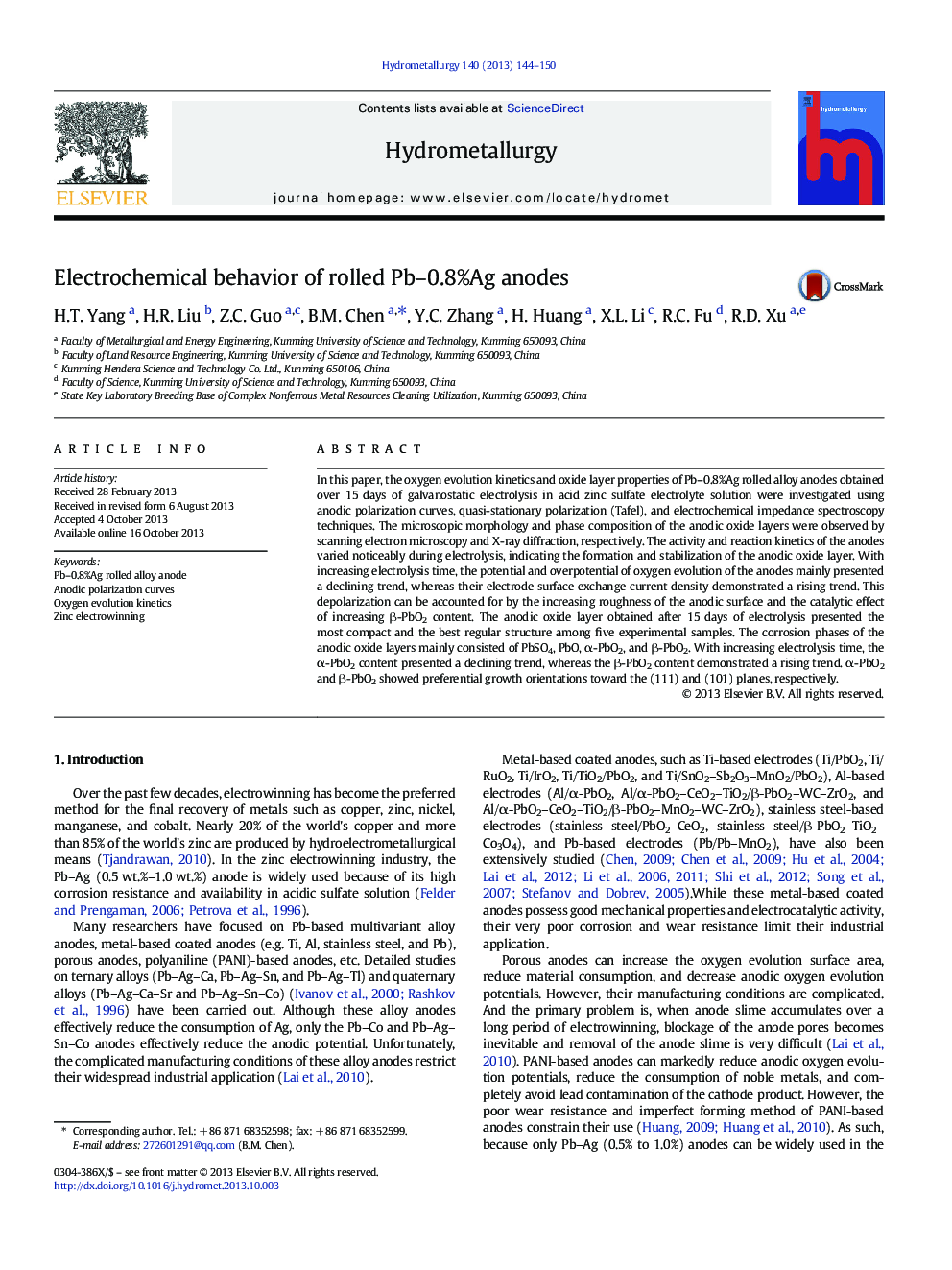| Article ID | Journal | Published Year | Pages | File Type |
|---|---|---|---|---|
| 212310 | Hydrometallurgy | 2013 | 7 Pages |
•Experiment was performed in long-term electrolysis for 15 days.•Potentials and overpotentials present a declining trend with increasing electrolysis time.•Roughness, surface exchange current density and the content of β-PbO2 present a rising trend.•Anodic oxide layer after the 15 days possesses the most compact and the best regular structure.
In this paper, the oxygen evolution kinetics and oxide layer properties of Pb–0.8%Ag rolled alloy anodes obtained over 15 days of galvanostatic electrolysis in acid zinc sulfate electrolyte solution were investigated using anodic polarization curves, quasi-stationary polarization (Tafel), and electrochemical impedance spectroscopy techniques. The microscopic morphology and phase composition of the anodic oxide layers were observed by scanning electron microscopy and X-ray diffraction, respectively. The activity and reaction kinetics of the anodes varied noticeably during electrolysis, indicating the formation and stabilization of the anodic oxide layer. With increasing electrolysis time, the potential and overpotential of oxygen evolution of the anodes mainly presented a declining trend, whereas their electrode surface exchange current density demonstrated a rising trend. This depolarization can be accounted for by the increasing roughness of the anodic surface and the catalytic effect of increasing β-PbO2 content. The anodic oxide layer obtained after 15 days of electrolysis presented the most compact and the best regular structure among five experimental samples. The corrosion phases of the anodic oxide layers mainly consisted of PbSO4, PbO, α-PbO2, and β-PbO2. With increasing electrolysis time, the α-PbO2 content presented a declining trend, whereas the β-PbO2 content demonstrated a rising trend. α-PbO2 and β-PbO2 showed preferential growth orientations toward the (111) and (101) planes, respectively.
